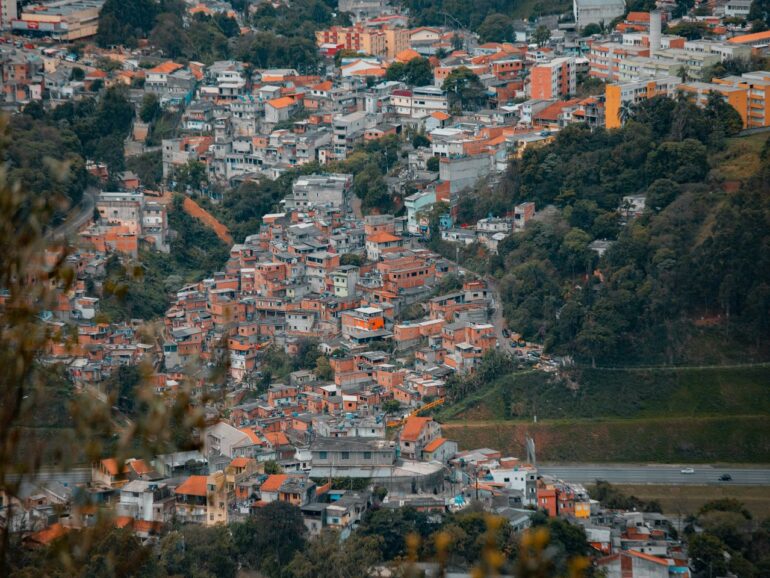Brazilian favelas, renowned for their vibrant culture and the scenic backdrop against Rio de Janeiro’s rounded hills, are so much more than just tourist attractions—they’re home to nearly 13,000 communities across the country, rivaling the population of the Netherlands. Yet, access to quality financial services remains a pressing need in these high-density, low-income urban neighborhoods.
However, initiatives emerging from within the favelas are now addressing this critical issue head-on. In February, G10 Bank, the first digital bank born within the favela, opened its first physical branch in Paraisópolis, one of the largest such communities in Brazil’s most populous city, São Paulo. The neolender is using Dock’s embedded finance capabilities to power up banking services, with a goal to bring online banking to its residents. It is also planning to open more branches in other favelas throughout Brazil.
The case for investing in a favela
Favelas in Brazil are home to a massive population. Estimates point to 17 million people living in these settlements, some of whom can easily exceed the threshold of a million inhabitants. That is the size of the entire population in the Netherlands, or almost half that of Canada’s. It is also a relevant economy. The consumption power of Brazilian favela residents was estimated to be over $30 billion in 2022, according to a survey by Outdoor Social Intelligence. That is nearly the GDP of Iceland.
This vast population, however, has been most seriously underserved when it comes to banking services. Financial products are often unaffordable or nowhere to be found. In many cases, access to loans, which requires a formal employment record, is incredibly scarce, leading its inhabitants to turn to other, less secure financing options, and leaving small entrepreneurs with little capital.
G10 Bank seeks to break the mold in this respect. In its initial phase, it will introduce an app offering essential services like Pix, Brazil’s renowned instant payments system, online transfers, deposits, and utility payments. Additionally, users will have access to a pre-paid Visa debit card.
“Financial services these days are nearly as relevant as health or educational services, especially in Brazil,” said Antonio Soares, a board member of G10 Bank and CEO of Dock, a tech firm that provides banking-as-a-service products for fintech and banks in Latin America, and which supported the necessary infrastructure. He underscores there is a dual purpose, too, and not just a case for financial inclusion. “This is not just philanthropy,” he says. “Yes, we can make money while changing the world.”
Below is a short Q&A that Fintech Nexus conducted with Soares about G10 Bank and the favelas.

How relevant of a market is a favela?
We are talking about huge numbers. 17 million people live in 13,000 favelas in Brazil. Favelas are part of our society, and there is a lot of (entrepreneur) movement within them. Mobile phone penetration is very high throughout Brazil, including in the favelas. So everybody has their own cell phone and access to the internet. That’s why creating a physical branch is important for us to help the population better understand how to use our services. It’s a kind of first step to digitize people.
What peculiarities make it difficult to cater financial services to favela residents?
There are many. For instance, since you live in the favela, you do not have a zip code, so buying things online on a marketplace is almost impossible. In Brazil, 50 million people work in informal jobs (and have no formal records). They sell things on their street, have their own small business, or sell through the internet through platforms like Mercado Libre. And they do not trust banks. That is a reality not only in Brazil but also in Latin America. To really understand the reality of what favela residents need, you need to listen to someone who lives in one. And G10 Bank was born in the favela.
Why should G10 Bank succeed?
Some banks are actually trying to position themselves and cater to Class C and Class D segments. But since you have a lot of people with very low incomes, the cost of serving this population is higher. And that’s why we do believe embedded finance is the right choice in this case. At G10 Bank, they’re close to the customer, and the service cost is way lower. For instance, our branch’s fixed costs are 10 times lower than a traditional branch. Additionally, embedded finance is important for trust. If you go to a retailer that you go to every week, there is probably a trust relationship. Now, if this retailer started offering financial services, favela residents would find it more trustworthy than a bank. We think it will work the same way with G10 Bank.
What is the product roadmap for G10 Bank?
We use our technology exactly like we do with our big clients. G10 Bank clients will have their own app. They can create virtual accounts, get debit cards, pay through Pix, and get a POS to start selling online or in-store. A small restaurant in the favela could get paid through G10 Bank. The second phase is how to help with financial education and credit. There are a lot of people in the favela who are (small) entrepreneurs. We are talking about women who run their families, but they also fabricate clothes, make food for sale, and run small manicure shops and beauty services. What they need is financial support, education, and credit to start their business.
How will G10 Bank make money?
This is an investment. In the future, we will be talking about spreads, whether clients are using cards, what our revenue is from interchange, and so on. It is the same economics as in the bank. The difference here lies in credit. When analyzing credit risk, G10 Bank will do the same things as a traditional bank, plus additional insight since G10 Bank knows their clients and has a better understanding of their needs. For a big bank, you are just an individual. For G10 Bank, you are part of the community. G10 Bank was born in the favela. It knows the people already.


